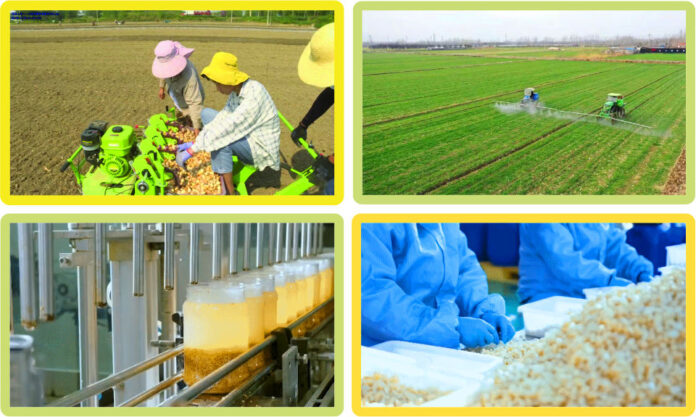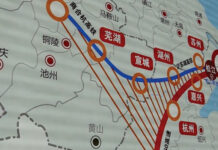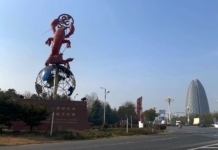Large Scale, Industrial Farming is Finally Catching on in China. For those who Played their Cards Right, it’s become a Veritable Garlic Mine.
A county-level city under the administration of Xuzhou City in Jiangsu’s far northwest with a population of approximately 1.5 million, Pizhou is principally known for two things.
For tourists, that would be the ginkgo trees, in particular the famed Ginkgo Time Tunnel.
For farmers and now, industrialists, that would be the wonder food, garlic.
Driving into Pizhou, endless garlic fields on both sides of the highway come into sight. As one of the three major garlic-producing areas in China, going on a third of a third of the local population is involved in the garlic business.
While that’s a daily aroma better to start enjoying, change has been afoot in Pizhou, the results of which are today beginning to show themselves.
In 2019, based on its garlic dominance, Pizhou established a national-level, modern agricultural-industrial park with Suyangshan Town as its core.
Liu Xiansong is a technician from Suyangshan. He got in the game early, back in 2018, contracting 13 hectares of land and joining the army of garlic planters.
“In the past, it all depended on labour, but in the last 2 years, it all depended on machinery”, said Liu in a report by The Paper detailing recent industrial advances in Pizhou. Liu has invested in garlic seeders, harvesters and sorting machines, realising the entire mechanisation of garlic production, from plowing, weeding and sowing, to plant protection, harvesting and final sorting.
Such mechanised planting is now utilised for 95 percent of the garlic grown in Suyangshan.
More recently, the Pizhou Modern Agricultural Industrial Park created a cooperation with scientific research institutes, including the Provincial Academy of Agricultural Sciences and Xuzhou Academy of Agricultural Sciences, in order to cultivate multiple new garlic varieties such as Pisuan No. 1. Such new varieties have increased the local yield per thousand square metres to over 375 kilograms.
Waiting and praying to sell his modest crop.
In 2002, at the age of 25, Zhang Liming set up the very first food-related company in Suyangshan. He found that garlic was easy to grow, but difficult to sell.
In the past, trade and logistics were underdeveloped; garlic was easy to grow but difficult to sell. “In those days, we took four large white plastic buckets filled with drinking water, a large bag of dry pancakes and and another of dry, salted beans, to [sit outside] the buyer’s place for 2 weeks”, recalled Zhang.
But Zhang would not be modest for long, going on to prosper in the following 2 decades. Today, his guild, the Zhang Liming Co., represents approximately 300 garlic trading and processing firms in the garlic-industry chain. Together, they can each year now churn out one million tons of the wonder food.
“These little garlic cloves together have formed a ¥10-billion-agricultural industry. In the final analysis, this was the product of modern agriculture meeting the concept of industrialisation. It’s an empirical approach for the rapid development of the garlic industry in Pizhou that has achieved results in a short time”, said Tang Mingzhen, former Chief Agronomist for the Jiangsu Provincial Department of Agriculture and Rural Affairs.
The developments in Pizhou of late also paint a bigger picture; a picture that helps us better understand what is meant by the term, “the Chinese path to modernisation”. Pizhou is without doubt headed down it. And fast.













